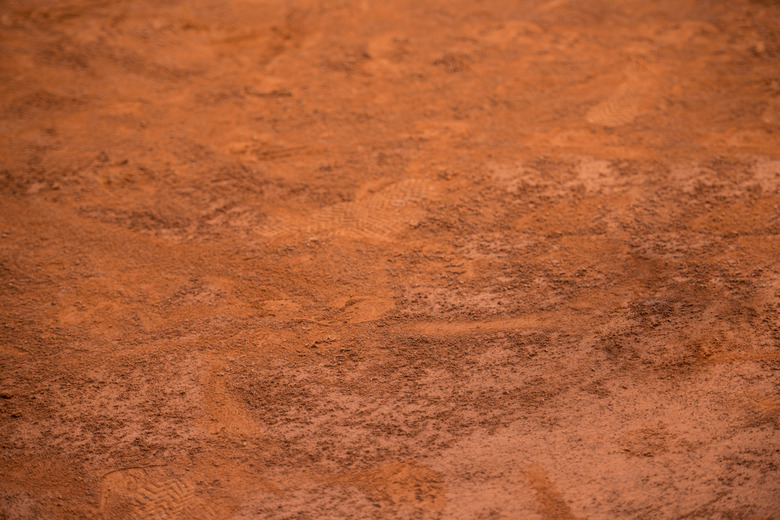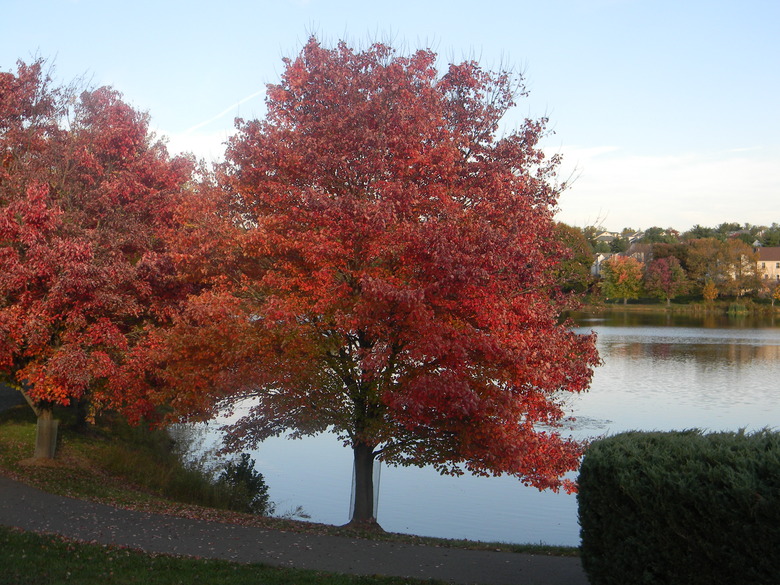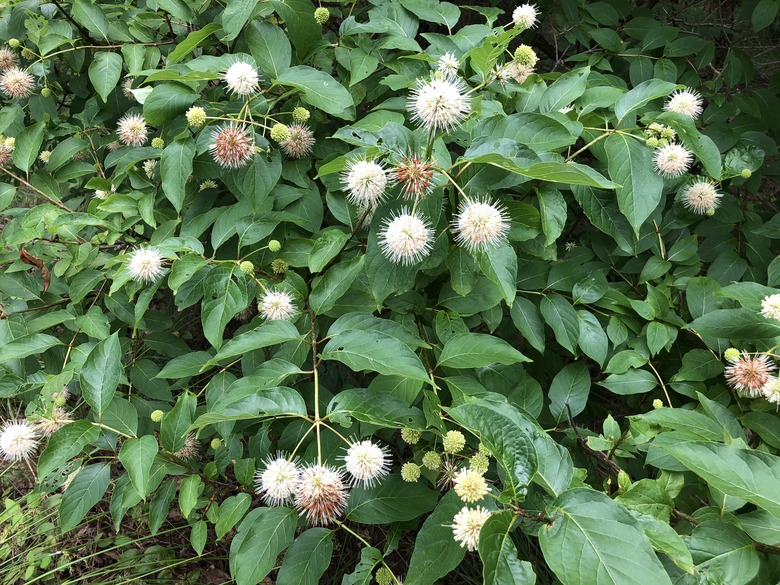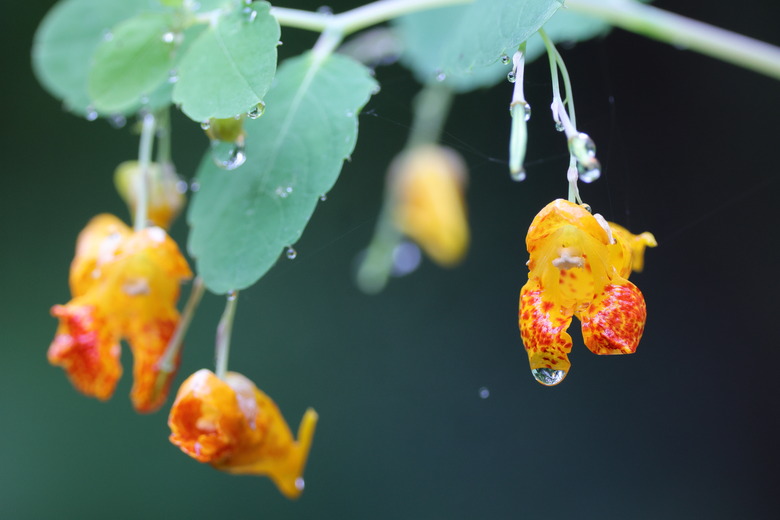What Are The Characteristics Of Clay Soil?
Soil is made up of three different types of mineral particles: sand, silt and clay. The ratio of these three particles varies in different types of soil.
Clay soils contain high amounts of clay, which make these kinds of soils difficult to work with in the garden, but they can often be amended to make them more suitable for growing plants.
Types of Clay Soil
Understanding the type of soil with which you are working is important in order to know how to approach gardening in it.
Clay soils, according to the Utah State University Forestry Extension, are those that contain 40 percent or more clay content. Sandy clay has a 45 percent or higher sand content in addition to clay, while silty clay has a silt content that is 40 percent or higher. Soils that contain between 20 and 40 percent are referred to as clay loams.
Clay content higher than 30 percent tends to cause problems for gardeners.
Tip
Clay soil usually forms a long ribbon when rolled between the thumb and index finger.
Characteristics of Clay Soil
Let's take a look at some of the properties of clay soil that make it a difficult growing medium for plants.
Small Particle Size
The particles in clay sand are very small. In fact, clay particles are of the smallest of the particle types in soil. As a result, when clay soil is dry, it forms hard lumps. These particles may also form a surface crust that makes it hard for seeds to germinate.
When wet, however, clay soil is sticky to the touch and has the texture of modeling clay. According to the University of Nevada, Reno Extension, clay soil usually forms a long ribbon when rolled between the thumb and index finger. This is one way to know if you are dealing with clay soil.
Water Retention and Bad Drainage
While clay soil tends to be fertile, one of the main problems associated with high clay content is water retention. Because clay particles stick together, clay soil often drains poorly, which can cause root rot in many types of plants.
The University of Maryland Extension recommends digging a hole a foot wide and a foot deep and filling it with water. If the water drains out at a rate of less than an inch an hour, you may be dealing with clay soil.
Poor Air Circulation
This also prevents air from penetrating the soil, which is important for root development and to support beneficial microbes. Plants grown in clay soil also have difficulty extending their roots.
Fertile, but Low in Organic Matter
Clay soils tend to be very fertile, which means that it is usually not necessary to add phosphorus, potassium or nitrogen to clay soils. However, many clay soils are low in organic matter, which is living tissue from plants, animals, microbes and other organisms in the process of decomposing.
Tip
Incorporating organic matter such as compost, shredded leaves, straw and well-rotted manure is a great way to amend clay soil to improve drainage and help aerate the soil.
Amending Clay Soil
If you hope to garden in soils with a high clay content, you can improve drainage and aerate the soil by thoroughly incorporating organic matter. The Utah State University Yard and Garden Extension recommends compost, shredded leaves, straw and well-rotted manure for amending clay soil.
Sand is not usually considered a good amendment for clay soils. Planting in raised beds is also an option where clay soils make growing certain plants unfeasible.
Plants That Grow Well in Clay Soil
Despite clay soil's reputation for being difficult to work with, some plants that tolerate wet conditions can do well in this type of soil.
Trees: Red Maple, Swamp White Oak and Certain Elms
Trees that can handle clay soil include the red maple (Acer rubrum) and the silver maple (Acer saccharinum) as well as certain species of oak, such as the swamp white oak (Quercus bicolor) and the pin oak (Quercus palustris).
Other options include certain species of elm (Ulmus spp.) and willow (Salix spp.), though the roots of the latter can become invasive.
Shrubs: Gray Dogwood, Winterberry and Buttonbush
Certain shrubs can also be successfully grown in clay soil. According to the University of Maine Cooperative Extension, these include the gray dogwood (Cornus racemosa) and the red osier dogwood (Cornus sericea).
Winterberry, a species of holly that grows in swampy areas, is also a good choice for clay soils with poor drainage, says the Missouri Botanical Garden. The buttonbush (Cephalanthus occidentalis) also thrives in wet conditions.
Plants: Spotted Jewelweed, Yellowroot and Turtlehead
Annual plants that tolerate clay soils, according to the Missouri Botanical Garden, include the spotted jewelweed (Impatiens capensis). For clay-tolerant ground covers, consider yellowroot (Xanthorhiza simplicissima), which produces dark purple blooms in April and May, and turtlehead (Chelone obliqua), which may have pink, purple or white flowers that bloom from July to September.
References
- Utah State University Forestry Extension: Gardening in Clay Soils
- University of Nevada, Reno Extension: Soil Properties, Part 1 of 3: Physical Characteristics
- Utah State University Yard and Garden Extension: Gardening in Clay Soils
- University of Maryland Extension: Organic Matter and Soil Amendments
- University of Maine Cooperative Extension: Trees and Shrubs for Clay Soils
- PennState Extension: Trees, Shrubs, and Groundcovers Tolerant of Wet Sites
- Missouri Botanical Garden: Ilex verticillata
- Missouri Botanical Garden: Xanthorhiza simplicissima
- Missouri Botanical Garden: Best Plants for Problem Clay Soils: Annuals, Bulbs, Needled Evergreens, Ornamental Grasses



